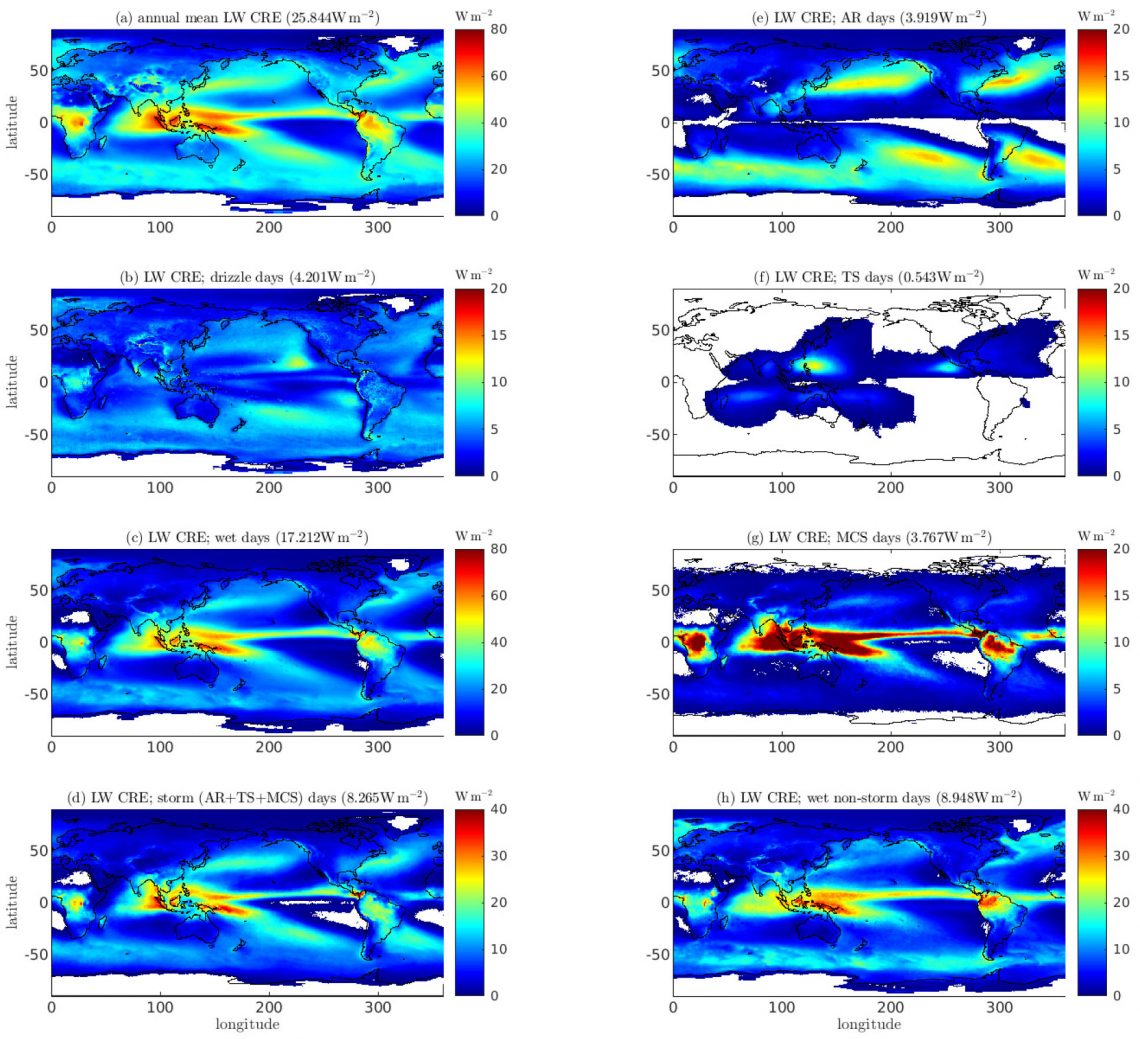May 28th, 2024
Key Findings
- This study Investigated weather and climate connections, with an emphasis on the effect of high-impact weather on Earth’s radiation budget, in order to better constrain climate models and improve predictions.
- Daily weather patterns were categorized into different types and the cloud radiative effects (CRE) associated with each type were measured.
- This study shows that precipitation days account for roughly 80% of global longwave (LW) and shortwave (SW) CRE due to their large frequency and high intensity in CRE.
- Despite being rare globally (13%), storm days (atmospheric rivers, tropical storms, and mesoscale convective systems) account for 32% of global LW CRE and 27% of SW CRE due to their higher intensity in LW and SW CRE.
Ming Zhao. Geophysical Research Letters. DOI: 10.1029/2024GL109090
This research Investigates the effect of high-impact storms on Earth’s radiation budget, in order to better constrain climate models and improve weather and climate forecasts. Using detailed satellite observations and reanalysis data, the author categorized daily weather patterns into different types and measured the cloud radiative effects (CRE) associated with each type. The weather patterns included non-precipitation days, drizzle, wet non-storm days, and storm days, encompassing events like atmospheric rivers, tropical storms, and mesoscale convective systems.
The results show that precipitation days, which include both drizzle and wet days, contribute to about 80% of global longwave (LW) and shortwave (SW) CRE due to their high frequency and intensity. Even though storm days are rare globally (only 13%), they collectively contribute to approximately 32% of global LW CRE and 27% of SW CRE because of their stronger impact on both LW and SW CRE. These findings are important for understanding how different weather systems influence the Earth’s radiation balance and will help improve the accuracy of climate models.
Clouds cover about two-thirds of the Earth’s surface and are often organized into coherent systems by large-scale atmospheric flows. They can either warm the Earth by trapping outgoing longwave radiation or cool it by reflecting shortwave solar radiation back to space. The net effect depends on factors such as cloud height, type, and optical properties. The impact of clouds on the CRE can be deduced from satellite observations comparing upwelling radiation in cloudy and non-cloudy regions. Given the large magnitude of CRE, clouds have the potential to significantly influence climate feedback.
Indeed, cloud feedback has been identified as the primary source of uncertainties in climate models’ projections of future climate since the first IPCC assessment report. Unfortunately, a reliable observational constraint on global cloud feedback remains elusive due to the short satellite record, as well as other complexities. Reducing model biases in simulations of the observed present-day CRE will help narrow down cloud feedback uncertainty and improve climate models’ fidelity in future projections.
These results will be useful for understanding the roles of various weather systems in Earth’s radiative budget and for more in-depth climate model evaluations.



